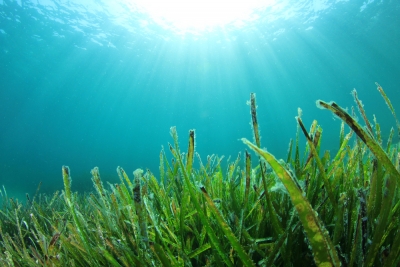
We all know what a meadow is. But most of us wouldn’t know they exist on the seafloor too. Seagrass meadows are among the world’s least known ecosystems. Yet these underwater gardens are crucial to our survival – they are among the most important carbon reservoirs on the planet
Seagrass is a flowering aquatic plant closely related to the flowering plants on land. Seagrasses have long green, grass-like leaves, and are found in shallow salty and brackish waters in many parts of the world
Seagrass meadows support a wide range of marine species such as fish, turtle and dugong. They help prevent beach erosion and mitigate the impact of destructive storm surges. They absorb CO2 and exude oxygen. They also clean the ocean by soaking up polluting nutrients and improve water quality. Recently, scientists have found that certain species of seagrass also capture plastic debris.
What are Neptune balls?
Posidonia oceanica is a type of seagrass found in the Mediterranean waters. When blades of P. oceanica fall or break off their fibres can form tangled masses in the shape of a rugby ball by the swirl of ocean currents. Called Neptune balls, these balls look like brown clumps of steel wool. And researchers have found that these Neptune balls, as they fomu have a knack for trapping small fragments of plastic and then wash ashore during atoms.
By analysing loose leaves and Neptune balls on four Spanish beaches, researchers found plastic pellets, microbeads and polyester fibres from clothes entangled in half of them. Up to 613 and 1,470 items per kg were found in loose leaves and Neptune balls, respectively.
Scientists who were part of this study estimate that the seagrass balls may collect up to 867 million bits of plastic in the Mediterranean annually.
And that’s one more reason to save the seagrass ecosystem from destruction from habitat loss, pollution, coastal construction and overfishing.
Picture Credit : Google

